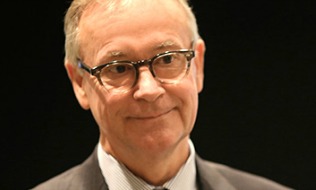
The Ontario Municipal Employees Retirement System improved its net investment return to 10.3 per cent at the end of 2016 compared to 6.7 per cent at the end of 2015, citing a strong performance from its public investments.
The pension fund increased its net assets to $85.2 billion in 2016 from $77.1 billion in 2015, and boosted its funded status to 93.4 per cent compared to 91.5 per cent in 2015.
OMERS is on track to be fully funded by 2025 despite the challenges that come with market volatility, said Jonathan Simmons, chief financial officer at OMERS, in a press conference in Toronto Friday. He credited strong investment returns along with members and employer contributions in advancing the pension plan’s funded status.
The pension fund delivered a strong investment return due to its public investments, which soared to 9.5 per cent in 2016 from 0.7 per cent in 2015.
“. . . We all know it was a good year in equity markets with the MSCI World up nine per cent and our own TSX up 21 per cent, but it was not an easy place to make money in the world of fixed income with the way bond prices moved during the year,” said Simmons.
Read: OMERS return drops to 6.7% in 2015
Despite the challenges, Simmons said OMERS was able to raise $4 billion of investment income from public assets with $2 billion coming from equities and $2 billion from fixed income due to specific strategies.
First, the pension fund built its global equity portfolio around investments with “deep moats around their businesses” that promise to pay “solid dividends in the future,” said Simmons.
Second, OMERS increased its credit books to $15 billion in 2016 from $9 billion in 2015 and decreased its government bonds exposure to $10 billion in 2016 from $16 billion in 2015.
Read: OMERS part of $1B deal to buy legal technology company
The credit portfolio has largely diversified the pension fund’s fixed-income portfolio, said Simmons. “Even though the corner for interest rates appears to have turned and rates are going up, they’re still very low and they still won’t meet the pension liability if we leave it just to investments and government bonds.
“So being able to expand that credit portfolio, take advantage of credit spreads and a well-diversified portfolio of high-quality credits is something which really started to fight for us and we’re very pleased with its performance.”
Read: OMERS invests in Equitable Group
While public investments pulled the weight in delivering strong returns, overall returns from private investments dropped to 12 per cent in 2016 compared to 14.5 per cent in 2015 due to a decrease in returns from infrastructure and real estate.
OMERS scaled back its overall asset mix in private investments to 45.1 per cent in 2016 from 48 per cent in 2015, and tweaked its portfolio by scaling back on private equity and real estate while slightly increasing its exposure to infrastructure.
There’s no question the flow of capital will continue towards alternative assets, said Michael Latimer, president and chief executive officer at OMERS, during the press conference, noting the fierce competition in the asset class. But he said the pension fund took advantage of the appetite for alternatives by selling some of its own private equity assets.
Read: OMERS private equity to sell baked goods company
As for infrastructure, OMERS will continue to rely on the asset class for long term and steady cash flows, said Simmons. He noted infrastructure has produced a steady return of 11 per cent with eight per cent of that coming in the form of cash.
As for plans for 2017, Latimer said OMERS is focused on managing its existing portfolio rather than acquiring more assets. “. . . It’s not about trying to acquire assets. It’s about working with assets you understand, management and teams you understand, the geopolitics, the political landscape . . . we’re pretty much on target where we want to be.”
Read: OMERS part of consortium to acquire Australian port lease
